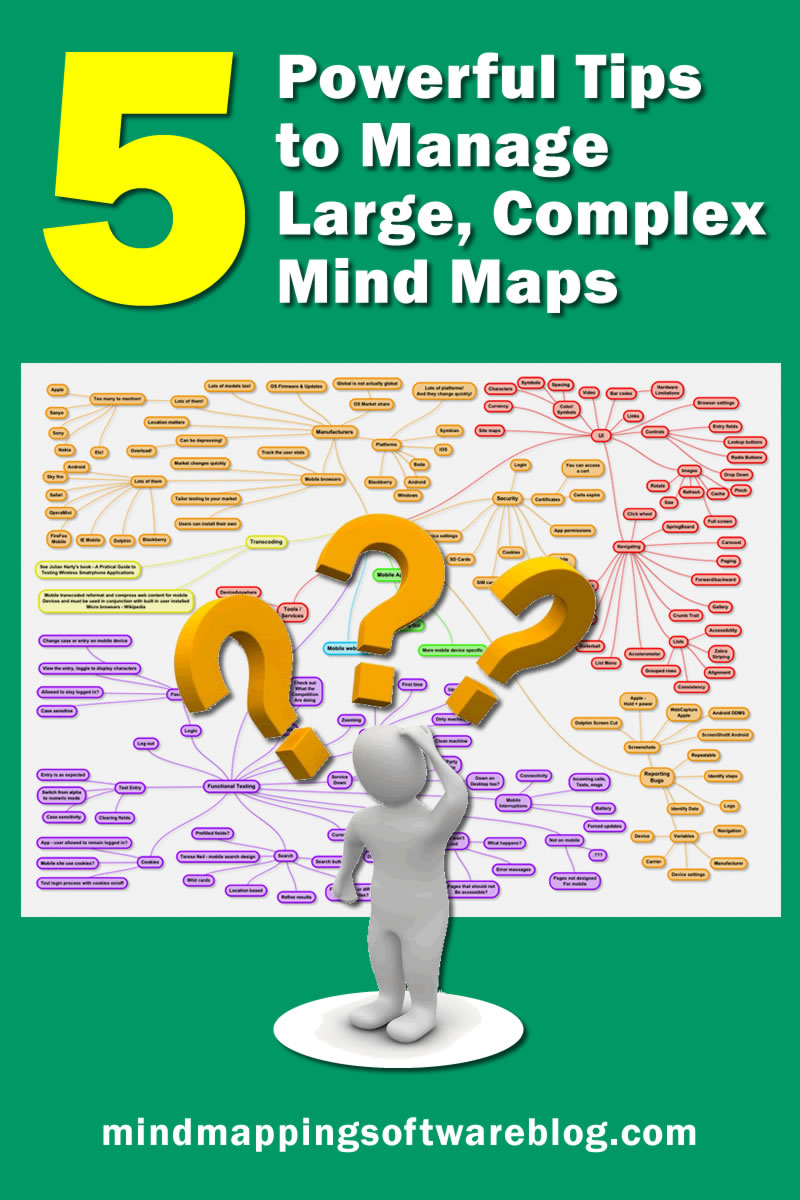 Large, complex mind maps can quickly become challenging to manage. Your screen can quickly become filled with topics, subtopics, symbols, relationship lines, boundaries and more. Fortunately, it’s easy to control how much information you’re viewing at any given time, using these 5 powerful strategies:
Large, complex mind maps can quickly become challenging to manage. Your screen can quickly become filled with topics, subtopics, symbols, relationship lines, boundaries and more. Fortunately, it’s easy to control how much information you’re viewing at any given time, using these 5 powerful strategies:
1. Close branches you’re not currently using: All mind mapping software enables you to collapse map branches you’re not using. When you collapse a branch, it and its sub-topics disappear from view, replaced by a “plus” sign to show you that more content is hidden there. Yes, it’s very simple – but most mind mappers tend to forget they can do this!
2. Filter your map’s content to hide some of it: Many mind mapping programs give you the ability to show or hide parts of the content of your map based upon different criteria. While the filter is applied, these elements disappear from view. When it is removed, they reappear in your mind map. It’s a terrific way to manage the information overload that sometimes happens when you’re working with a large, complex mind map.
You can show or hide topics that:
- Match a specific search term
- Contain task data
- Have a specific icon or symbol attached
- Have a specific priority
- Contain hyperlinks or attachments
- Match other criteria
3. Selectively turn off icons, task information and notes: If you want to simplify the visual appearance of your mind map so you can only see the topic text, consider hiding some of the topic embellishments, such as icons and symbols, task information and notes. Unlike filtering, which shows or hides information based upon very specific criteria, this capability is more of a blunt instrument – it turns off all icons, all tasks, and so forth. If too much visual clutter causes your eyes to glaze over, this capability could help you to better focus on the content of your mind map.
4. “Focus in” on a branch to remove distractions from the screen: When you focus in on a map branch, only it and its child topics appear on screen. It’s as if the topic you selected becomes the new central topic of your map. When I’m creating a large, complex mind map, I often use this capability to help me focus in on each section of it, one at a time. This technique helps me to ensure that each section of my mind maps gets my undivided attention and is as complete as possible.
5. Break off large, self-contained sections into linked sub-maps: When all else fails, use your program’s ability to divide a large map into several smaller linked maps. Look for topics with a lot of detail that are fairly well self contained. When you invoke this command, the topic you selected remains, but a copy of it and all its child topics are saved to a separate mind map; a link is created that enables you to quickly and easily navigate to it.
It’s your turn to share
What are your techniques for managing large, complex mind maps? Please share them in the comments below.

Leave a Reply